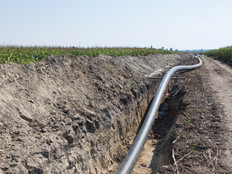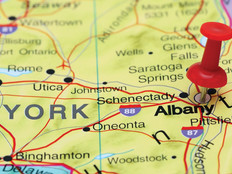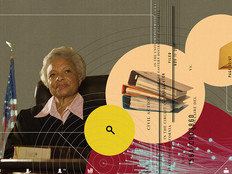NASCIO 2014: States Adopt Smart Sensors
The Internet of Things is getting bigger by the day. According to Gartner, there will be nearly 26 billion IoT devices by 2020. As more things connect to the Internet, states are starting to tap the IoT to provide resources to their citizens. For example, the North Carolina Innovation Center — or iCenter, for short — plans to implement sensors in museums and aquariums throughout the state. Any visitor with an iPhone can walk through a museum and the device will share information about nearby exhibits, suggest other places to go in the museum or allow the visitor to buy something.
Maine is also experimenting with IoT. The state’s Marine Patrol agency is developing an app to monitor lobster fishers. The app will connect to devices placed on buoys to monitor where fishing boats are, and if a boat is fishing outside its zone, the state agency is alerted to take action.
Here are some other innovative uses of IoT that were presented at this year’s NASCIO conference:
Who’s Driving the Car?
There were over 33,000 people killed across the country in car crashes in 2012 as reported by the National Highway Traffic Safety Administration (NHTSA). Of those fatalities, 80 percent were caused by driver error. “A connected vehicle is enabling a vehicle to talk to another vehicle or the infrastructure around them,” says Kirk Steudle, Director of the Michigan Department of Transportation (MDOT). “If we take humans out of the element of driving, connected vehicles can save lives.”
NHTSA will decide by the end of 2016 whether all cars manufactured must be connected vehicles. To prepare for this, MDOT, the University of Michigan and several automotive companies have teamed up to build a “smart corridor” along the major interstates around Detroit. This technology will enable connected vehicles to communicate with the road and each other about possible hazards so that drivers can slow down and be prepared for what’s ahead.
Bright Idea
The commonwealth of Kentucky has 82 state-owned facilities and almost 14,000 employees. A year ago, when someone asked the Senate how much the state was paying for utilities, no one could answer. So the state is embarking on a project to find the answer. “The 10-year project, which will collect all the utility information into one place, will add 2,000,000 new IP addresses to import all the data collection needed to measure the utility usage,” says Dick Mink, Kentucky’s director of facility efficiency. Once it’s clear how much the state is spending on energy, officials can work with the utility companies to lower the bill. “Efficiencies achieved from these changes could reach 20 percent across the board, which translates to over $40 million annually in taxpayer value,” Mink says.
Warning: Dangerous Road Ahead
Utah has thousands of sensors connected to the IoT. As a mountainous state, it also has its fair share of snow and ice during winter. To help with monitoring road conditions throughout the state, the Utah Department of Transportation developed the Road Weather Information System (RWIS). UDOT monitors information from weather stations and provides the public with updated road conditions on their website. The agency also has developed a smartphone app that citizens can use to log in and report conditions that they are seeing on the roads. This info is fed into RWIS, making it a real-time source of information on road conditions for both citizens and the state, which uses the information to decide where to deploy snow plows. “The state’s Road Weather Information System has led to $2.2 million in savings for snow and ice activities and reduced car crashes by 39 percent,” says Utah Chief Technical Architect Robert Woolley.








